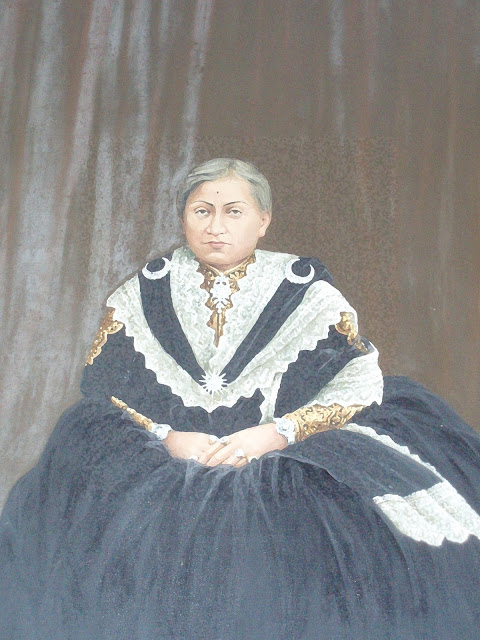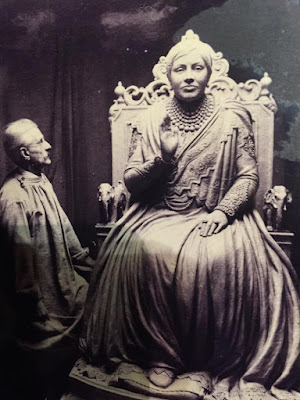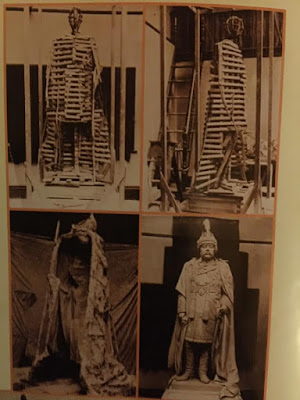In my European travels I marvel at famous works of art and praise the genius of portrait artists such as Michelangelo, Leonardo da Vinci, Raphael, Vincent van Gogh, Rembrandt or Velasquez without a thought given to their subjects. Obviously these artists were commissioned by the aristocracy and nobility of their days to sculpt a bust or to paint a portrait of their benefactors. As time went by these artists, many after their death, started getting recognition and their works of art started fetching unbelievable sums for auction houses. The rich would buy a Velasquez without a thought for who the forgotten likeness in canvas actually is and proudly decorate his living room with it.
Will such an eventuality come about in our local context? Will we see our often forgotten artists command a decent price for their works? We see olden statues of kings and prime ministers but we do not know who the artists actually are. Many artists behind the portraits of famous historical personalities may they be Shah kings or Rana maharajahs are relegated to anonymity. Would it not be possible to find out more on them?
Gazing at some of the Rana portraits of the early 20th Century one can see a signature – samar-krit – or “work of Samar”. Just who is this gentleman? Major General Dambar Shumsher was the second oldest son of Commander-in-Chief Dhir Shumsher, the youngest brother of Maharajah Jung Bahadur Rana. His passion for photography is well known and as an early aficionado he inculcated in his son General Samar Shumsher Rana the love of photography and portraiture. In my collection I have got Samar’s portrait of my grandfather Maharajah Juddha and my grandmother Tika Rajya Luxmi, third titled wife of Maharajah Juddha. This rich tradition was carried on by his son the pre-eminent Nepalese litterateur and artist Bal Krishna Sama! We remember his son Janardan as a popular Nepalese singer and musician.
 |
| Dambar Shumsher and family |
Another contribution of Dambar Shumsher and his family was to promote the talented Chitrakar family as court portrait artists and educate them in the art of photography and portraiture. Tej Bahadur Chitrakar was sent to Calcutta in the twenties during the time of Maharajah Chandra Shumsher to master the European style of portrait painting. Since then the Chitrakar family have been royal photographers and portrait artists. In my collection I have got a portrait of my great-grandmother Juhar Kumari Devi, mother of Maharajah Juddha Shumsher, painted by none other than Tej Bahadur Chitrakar in the thirties!
 |
| Tej Bahadur Chitrakar, portrait artist trained in Calcutta |
 |
| Juhar Kumari Devi, mother of Maharajah Juddha by Tej Bahadur Chitrakar |
This brings us to the question of who were the sculptors of those magnificent equestrian statues of Shah kings and Rana prime ministers and their families. I did a blog on the Kathmandu statues some years ago but just who cast these magnificent statues and where was nagging me all the while. I was fortunate to be privy to a partial solving of these mysteries just recently. I got to meet Mrs. Chanda Rana, philanthropist and restorer, and learn that she had actually done some work on where these statues were cast and by whom. She kindly shared with me the records she had compiled and the article she had written for a local magazine.
The Tonelli family originated in Italy. Domenico Antonio Tonelli I (1806 – 1871) migrated to England and became a British subject before 1861. He is described as a plaster figure maker and modeller. He successfully conducted his business and passed on his skills to his son Domenico Antonio Tonelli II (1834 – 1919). He and his sister Elizabeth as assistant continued the family vocation. Domenico Antonio Tonelli III (1865 – 1953) and his brother James inherited this mantle. Domenico was awarded the title of National Scholar and became a member of the Royal College of Art. Some of the Rana statues we see today in Kathmandu is the work of this master craftsman.
 |
| Inauguration of Maharajah Jung Bahadur Rana’s statue in March 1885 |
Domenico worked at Fulthorne Studios in Paddington, London. For a time he was an assistant to Sir Alfred Gilbert the renowned sculptor who cast the Eros statue in 1886 A.D. now seen at Piccadilly Circus in London. Domenico must have been a master sculptor when the Rana regime in Nepal was looking to commissioning more statues of prime ministers and their families. We do not yet know who cast the magnificent statue of Maharajah Jung Bahadur Rana commissioned by his brother Maharajah Rannodip Singh after his death and unveiled with a lot of pomp in Tundikhel in March 1885 A.D. However the statues of Maharajah Dev Shumsher commissioned by his brother Juddha and now in front of the Jawalakhel Zoo was definitely cast by Tonelli III. So too were the statues of Juddha’s mother Juhar Kumari and his foster mother and sister-in-law Karma Kumari, wife of Dev, both placed by Juddha inside the zoo.
 |
| Statue of Juhar Kumari Devi with creator Tonelli |
The statue of Maharajah Juddha placed at the newly constructed New Road built after the devastating earthquake of 1934 A.D. was also cast by Tonelli. There is a very interesting picture of the casting process by Tonelli.
 |
| Juddha statue now in New Road |
Domenico Tonelli eventually migrated to Australia and died there. It was because of his grandson Peter Tonelli’s fortunate record keeping that we have got a wealth of information on our statues or else we would lose an important part of our history.


